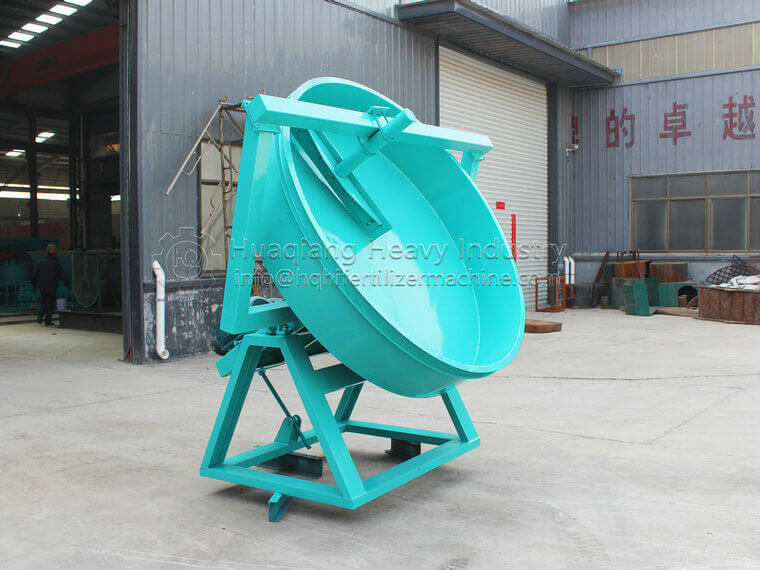With the development of economy and technology, the breeding of animal husbandry has gradually transitioned from agricultural farming to farm farming. A farm raises tens of thousands or even hundreds of thousands of livestock. Scale farming can centrally manage livestock, reduce breeding costs, and improve meat quality. However, while the number of livestock increases significantly, there is also a problem of environmental pollution caused by waste. If these feces are not properly handled, they will affect the surrounding geological structure.
Organic fertilizer disc granulator, also known as ball disc, can be used for various dry powder granulation and dry powder pre wet granulation. Pre wetting granulation has a good effect and should be prioritized. It has the advantages of uniform ball formation, easy control of water content in the feed ball, high strength of the feed ball, simple structure, convenient control, low power consumption, and smooth operation. The uniformly mixed raw materials enter the disc at a uniform speed, and under the combined action of gravity, centrifugal force, and frictional force between the materials, the materials move up and down in the disc until they reach the specified particle size and overflow from the edge of the disc.

The disc granulator is widely used in powder granulation in industries such as compound fertilizer, biological fertilizer, organic fertilizer, coal, metallurgy, cement, and mining.
Product features of organic fertilizer disc granulator:
1. No drying process, room temperature granulation, one-time molding, low investment, fast effectiveness, and good economic benefits.
2. Low power, reliable operation, no emissions of three wastes, stable operation, convenient maintenance, reasonable process layout, advanced technology, and low production cost.
3. The raw materials have wide adaptability and can be used for granulation of various raw materials such as compound fertilizers, pharmaceuticals, chemicals, feed, coal, metallurgy, etc. It can also produce various concentrations and types of compound fertilizers (including organic fertilizers, inorganic fertilizers, biological fertilizers, magnetized fertilizers, etc.).
4. Especially for the granulation of rare earth, ammonium carbonate, and ammonium sulfate compound fertilizers.